The Best Alien Invasion Movies
Extraterrestrial aliens usually mean one thing at the movies: invasion. Here are some of the best examples of us getting wiped out on the big screen.

In case you haven’t heard, Jordan Peele has a new movie out this weekend, which is exciting. And while we can be reasonably sure that a huge chunk of the plot and premise of Nope won’t be revealed until you are sitting in your cinema seat, we already know it has a sinister cloud and, at some point, a flying saucer. So it’s not too much of leap to guess that aliens are going to be invading Earth again. When it comes to movies though, that’s kind of their thing…
If you are the pernickety, ruin-everyone-else’s-fun kind of science fiction fan, most alien invasion storylines present a bit of a problem: If you can build spaceships capable of carrying a military force large enough to subdue a planet, and transporting that force the vast interstellar distances between habitable worlds, well, you probably don’t really need to invade anywhere.
It’s a problem that a lot of alien invasion movies ignore, but some come up with some truly original and exciting answers to that question. With that in mind, here are 10 of our favorite alien invasion movies.

10. Signs (2002)
Let’s start with a controversial one right out the gate. Signs has not aged well, we will be the first to admit. It is a painful reminder that somehow Mel Gibson keeps getting work; it is a film that shows M. Night Shyamalan starting to discover the limits of his beloved “Twilight Zone-twist” storytelling, and the ending is a literal deus ex machina that doesn’t even begin to answer the questions about faith that the story poses.
And yet, there’s a lot to love here. Making an alien invasion movie based around crop circles, possibly the most debunked paranormal phenomena there is, is actually charming. The isolated farmhouse setting and the gradual bleed-through of the alien invasion storyline via radio and blurry TV footage manage to fuel suspension of disbelief. The approach successfully evokes films like The Birds and Night of the Living Dead—influences the film wears proudly on its sleeves. But looking back at the film today, the best thing about Signs is the sheer underlying horror of its premise about alien invaders who are killed off by water.
Think about it: your world is dying, and your civilization is forced to find somewhere else to make your home. These aliens are clearly not a militaristic civilization by choice—they have no heavy armaments, apparently no armor, so this invasion is driven by necessity. But when they reach the promised land, they discover almost the entire surface of the planet is covered in a toxic, corrosive liquid. Worse than that, the native life itself almost entirely consists of this dangerous substance. What are the chances? That in the entire cosmos the nearest, best hope for your species’ survival is a world whose biosphere is uniquely hostile to life as you know it?
But it is no coincidence. This is no cold, indifferent universe. As the film explicitly states, God called this species here, purely so He could invite them to their own extinction. In an act that makes Sodom and Gomorrah, or Noah’s flood seem low-key, God has seen fit to doom an entire world’s intelligent life, so that the world He actually cares for can worship Him better.
It’s a story that makes the existential horror of the Cthulhu mythos seem tame.
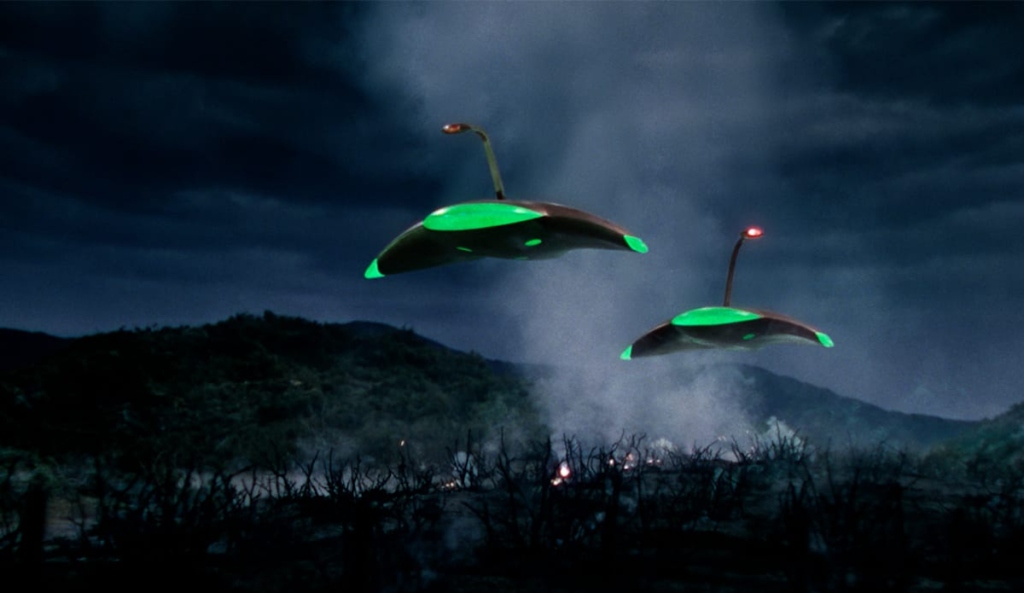
9. The War of the Worlds (1953)
Now it is a true and tragic statement that there has never been a really good, faithful adaptation of The War of the Worlds onscreen. It’s not that the material isn’t up to it. The book is strikingly visual, with visions of giant robotic tripods blasting heat rays, picking people up with metal tentacles to bash their brains out, or storing them in wire baskets to drain their blood for food. It is also starkly satirical—upending the arrogance of British imperialism by reducing the home counties to a territory occupied by another, better empire, with victory finally being handed to the human race not by our own ingenuity, or the beneficence of a merciful and human-centric God, but by the brutal, blunt force impact of pure Darwinism.
The only adaptation that comes close is the Jeff Wayne musical, and that is a hill to die on. Still, many of the adaptations of the first and best alien invasion story have been great films in their own right, and in seeing how they cast aside the themes of the novel they can be a great lens for looking at the times they come from. Steven Spielberg and Tom Cruise’s take from 2005, for instance, is rich in post-9/11 imagery, with “Martians” that burst out from underground rather than falling from the sky, and combat scenes full of heroic-looking U.S. soldiers that could have come straight out of Iraq war footage.
But probably the best adaptation, if, again, not by any stretch a faithful one, is George Pal’s 1953 interpretation of the tale. Gone is the “man on the street” narrator, fumbling his way to survival as an incompetent government and military repeatedly fail to realize the threat they are up against. This War of the Worlds sees square-jawed, heroic scientific geniuses allied with brusque military know-how in a global coalition against the invasion (although the USSR is oddly missing from this global fight against the, ahem, red planet).
Steampunk tripods are swapped out for some truly eerie floating stingray-shaped craft, which still looks impressive even today. And while germs are still the Martians’ downfall, the lurgy only really kicks in when they dare to attack a church, once more lending credence to a cosmic view where God hates basically every planet but this one.
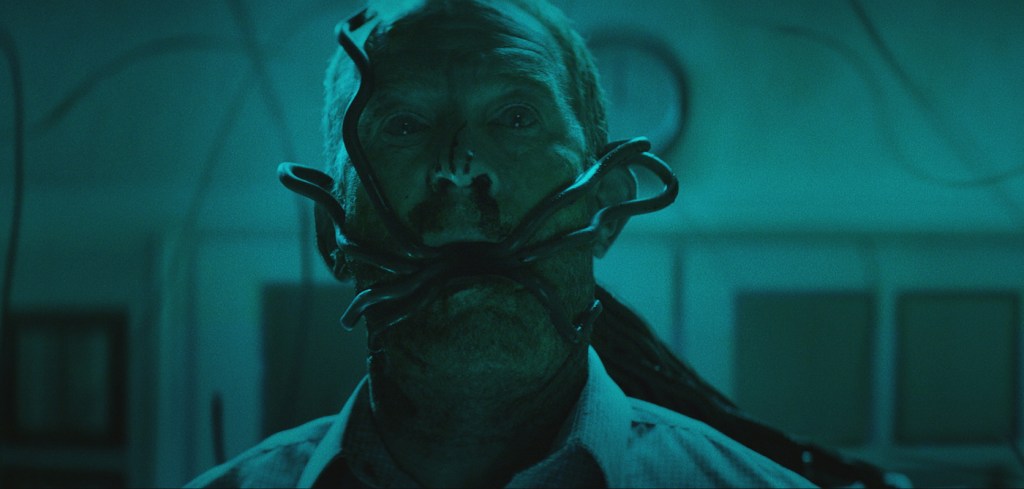
8. Await Further Instructions (2018)
One of the best subgenres of alien invasion, and indeed sci-fi horror stories as a whole, is “the Doctor didn’t show up.” Stories that have plots that would fill 45 minutes of Saturday morning teatime TV on BBC One, except that instead of a mysterious strange in a blue box turning up and magically saving the day at the last second, everything goes horribly, terribly wrong.
Await Further Instructions fulfills that brief beautifully. It came out in 2018, although it has to be said this writer’s experience of the film was further enhanced by watching it over the Christmas holidays in 2020. In the film, a couple goes to visit family for the holiday season—an unhappy, controlling, racist family. Then, after staying the night, they wake up to discover all the doors and windows are covered and sealed in impenetrable material. The only information from the outside world comes in the form of cryptic, counter-intuitive, and even downright dangerous-seeming instructions broadcast through the television set.
It feels like something Russel T. Davies might have written on one of his darker and more cynical afternoons, and it’s all too easy to imagine a version of this story where the Doctor (I’m imagining Capaldi, but Tennant or Whittaker would work just as well) is trapped in the house too and delivers an eleventh-hour speech about family and humanity that manages to turn everything around. But the Doctor doesn’t turn up in this story (aside from erstwhile William Hartnell stand-in, David Bradley in a very un-Doctor-ish role).
One thing this film also offers is a pretty compelling answer to the question “Why, if you were capable of traveling to an alien world, would you launch an invasion rather than living in your massive space habitats or terraforming a world of your own?” The threat in this film does not want resources, or slave labor, or territory. It wants something only intelligent life can provide. It wants love.

7. History of the Future Folk (2012)
Okay, that’s enough grim horror for now. History of the Future Folk is sweet, funny, and surprisingly wholesome. The alien invasion in question comes in the form of two very human-looking alien astronauts in low-budget spacesuits with helmets that resemble buckets with holes cut out of them. They have come to Earth to begin the colonization efforts for their home planet of Honzo but are dissuaded from conquering the planet when they discover the concept of music.
The film feels as if New Zealand comedy band The Flight of the Concords decided to make a sci-fi epic, but with the budget of an episode of The Flight of the Concords. This is for good reason; the film is effectively the origin story of real-life comedy-sci-fi-folk-band, The Future Folk.
The film is funny but also surprisingly heartfelt and sincere while never quite going where you expect it to. What they call a “feel-good film” in the truest sense of the phrase.
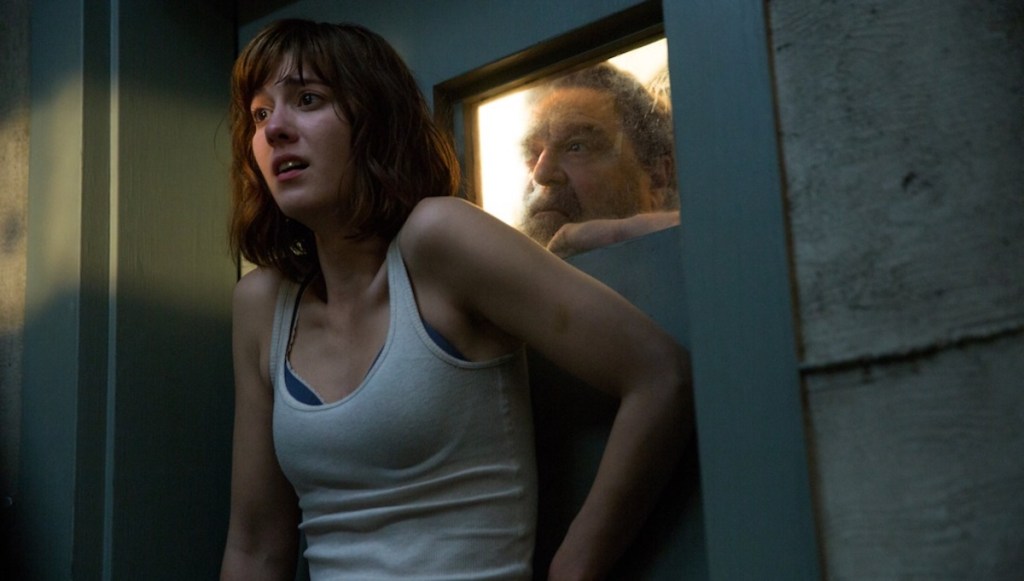
6. 10 Cloverfield Lane (2016)
We have a soft spot for massive global catastrophes you can only see from inside a small, cramped abode without many windows, in case you haven’t guessed already. 10 Cloverfield Lane is a fantastic bit of psychological horror. When a woman crashes her car and wakes up in an underground bunker owned by a possibly dangerous and unhinged John Goodman. She quickly learns that her captor, or savior, believes that the Earth has been overrun by aliens, and the only hope of survival is to stay inside this underground bunker at all costs.
Does she need to escape? Is the alien invasion real? You will have to watch the film to find out (but it’s on this list so that’s a big clue, frankly).
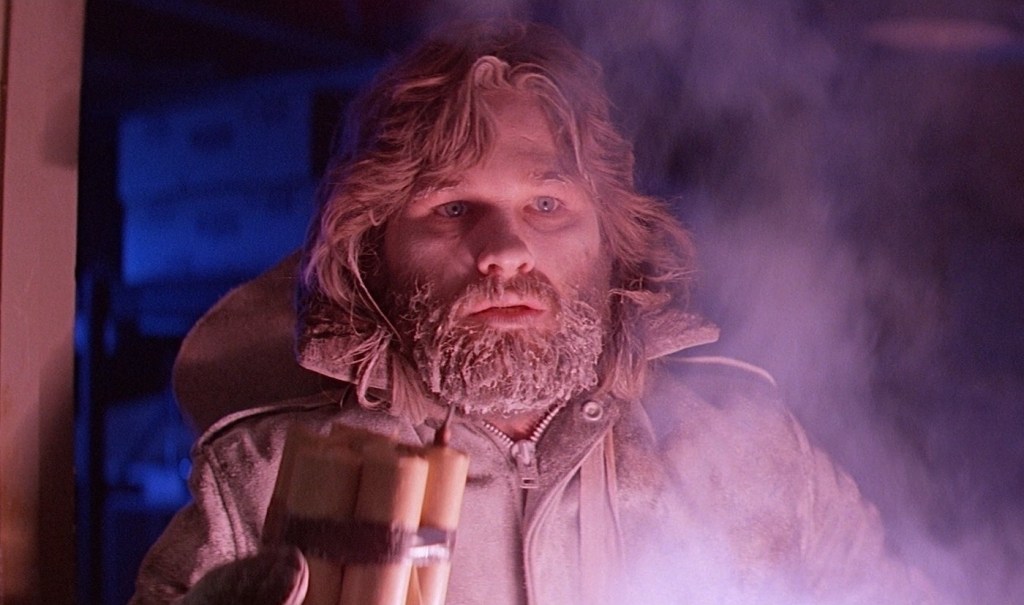
5. The Thing (1982)
A lot of aliens invade New York, but not many think of invading the Antarctic continent. This is for really, really good reasons. Now, we have tried to keep this list to actual invasions. So no movies about accounting executives from the Zork Zork Marketing Agency going on a weekend safari murder spree on the little blue planet (this is and will forever be our head-canon about the Predator movies, by the by).
But I think we can make an exception for The Thing just because of how alien the said Thing is. Crashing to Earth in a flying saucer that was more likely flown by the Thing’s last victim than the Thing itself, the titular creature immediately spreads viral-like through any life it encounters. Throughout the film, it is clear that the only thing, and only this one thing, preventing the creature from wreaking worldwide devastation is that it happens to have landed in the nastiest and most isolated place on the planet.
The film is also added to by Peter Watts’ short story “The Things,” which tells the story of the film from the point of view of the Thing. With a content warning for a jarring and alarming mention of rape, the story portrays just how alien the shapeshifting creature from another world really is—and how horrifying we seem to it.

4. Attack the Block (2011)
Attack the Block is an extremely British film—even more so than the films of the Cornetto trilogy that were released around the same time. To understand Attack the Block, you have to understand that we, in our media and as a country, really don’t like the young, the poor, and also we’re pretty damn racist. When the heroes of Attack the Block (including future rebel scum Jonathan Boyega) are introduced to us, they are not supposed to be immediately likable. They are supposed to be the feral, ASBO-bearing hoody youth that Britain’s tabloids liked to roll out as a scare for white readers on a regular basis.
When the alien invasion shows up, black, amorphous, furry monsters with glowing green fangs, they embody everything media has told us (and their mugging victim, nurse and future Doctor Jodie Whittaker) that these children are. It’s a great satire, a great action movie, and a great reminder that in alien invasion stories, the important thing about the aliens is what they reveal about the humans.
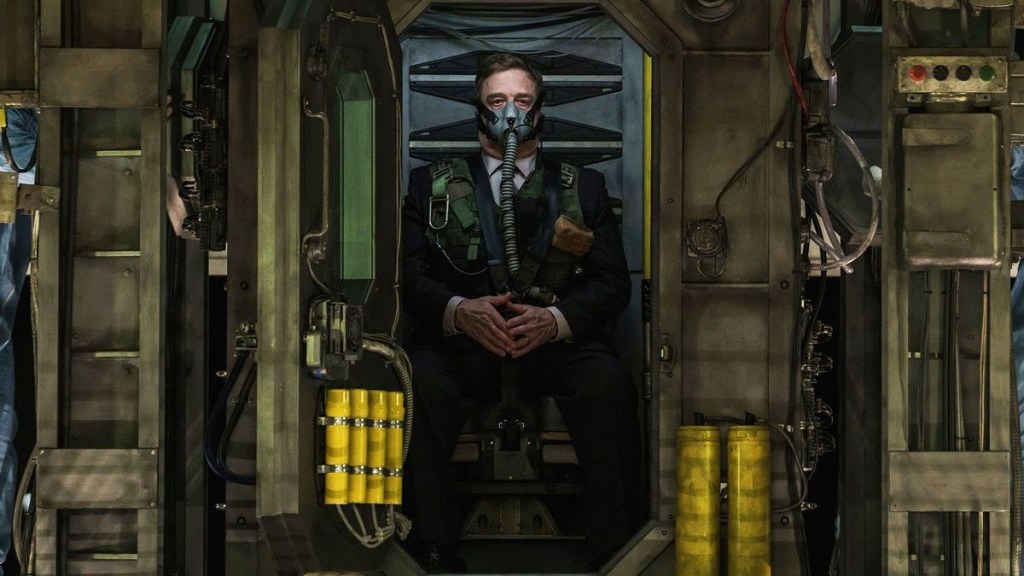
3. Captive State (2019)
Still, if Attack the Block’s politics is too subtle for you, Captive State is a film that lays it out as explicitly as possible. If you want to control the Earth, strip it of its resources, and irreversibly change the planet’s atmosphere and climate while crushing any possible dissent, what would you do?
Not much that we aren’t already doing, is the answer.
Captive State is a hugely underrated gem that takes place after aliens have turned up on Earth and shown off the big guns, causing our world leaders to immediately cack their pants and concede literally everything the aliens ask for. The aliens live in giant subterranean domes and are not seen throughout the film. Instead we follow the activities of a resistance cell. They fight human police forces, human military, and human political power that all work to keep the human populace under control while aliens strip out resources and change our atmosphere.
It is a film where the human cause seems genuinely hopeless. The resistance is not a plucky band of rebels, but a group of isolated, desperate people operating with the certainty that they will die before any of their goals are achieved. It leaves behind the glitzy, showy glamour of alien invasion to show the grim drudgery of alien occupation, and the true costs required to fight it. It is a film that more people should watch.

2. They Live (1988)
If you crack open Captive State’s DNA, you’ll be sure to find a few strands of They Live in there. In this ‘80s cult classic, director John Carpenter announces that he knows writers who use subtext, and they’re all cowards. A set of special sunglasses reveals that our politicians, business leaders, religious leaders, and basically everyone in the upper-middle-class and above is a gory skeleton-faced alien who has inserted itself into our Earthly power structures to exploit the human race—particularly those who lean toward the 1980s’ brand of Reaganism Republicans in the U.S.
The only way to see through the illusion is a special set of sunglasses that allow you to see the aliens’ true faces, as well as turning every billboard and magazine cover into instructions to “Consume” and “Obey.” The high point of the film is probably the famous “sunglasses” duel where Roddy Piper and Keith David kick the absolute crap out of each other as Piper tries to persuade David to put on the sunglasses, which Keith David very much does not want to do.
It is a film that is loudly and explicitly about the evils of capitalism and the power structures that hold it up. Which hasn’t stopped Carpenter from having to go on Twitter and explicitly deny it’s about Jewish people secretly controlling the world due to heinous Anti-Semitic “theories.” Catastrophic misreadings aside, however, this is a brash, loud, out-of-fucks film that shows that the best way for aliens to conquer this planet is simply to slot themselves into the power structures that already exist.
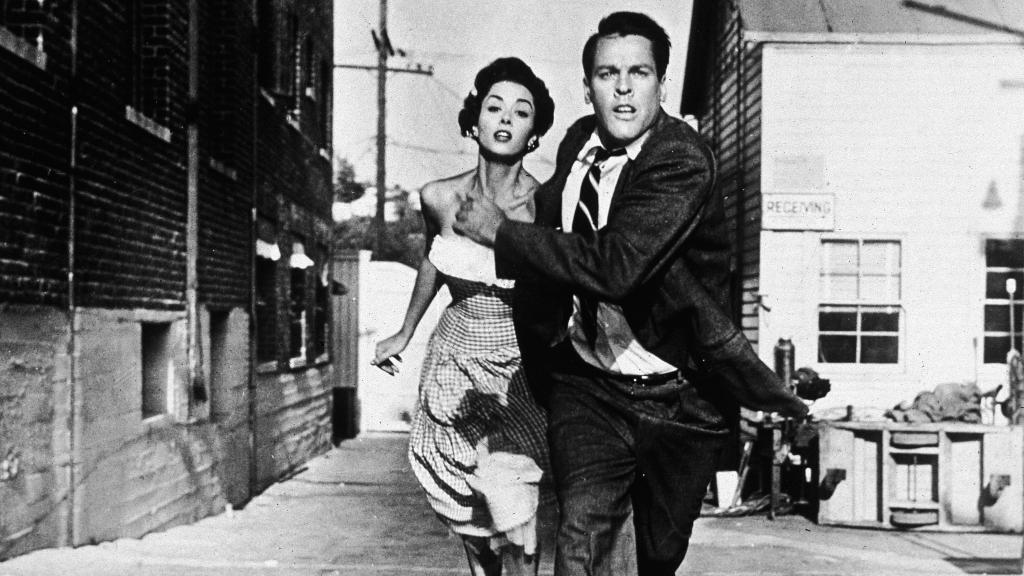
1. Invasion of the Body Snatchers (1956)
Of course, an alien invasion does not always have to wear its politics on its sleeve to be great. Invasion of the Body Snatchers is a perfect example of how metaphor in science fiction isn’t always that successful. The film has been interpreted by critics, and indeed its own cast, as simultaneously anti-McCarthyite, anti-Communist, and as a straight-up adventure story with no more political subtext than your average video game about overthrowing a dictator.
But what Invasion of the Body Snatchers does have to offer is one of the most ingenious forms of alien invasion ever committed to screen. As we have already said, getting an army of alien invaders across the infinitely vast and cold void of space is a massive undertaking that, if you can pull it off, is probably unnecessary. Body Snatchers solves the problem by having its aliens not languish in a spaceship, but drift down to Earth as seeds. Space is big, but time is long, so if you toss a bunch of seedpods out there into the cosmos, eventually they’ll land on something worth invading.
Of course this is a scattershot solution, and there’s no guarantee your alien lifeforms are suitably adapted to the planet they put down roots on. So the seeds simply imitate whatever the dominant local life form appears to be.
The film itself is a masterwork of lo-fi invasion horror. The invasion is glimpsed as nothing more than an amorphous anxiety. At first, a doctor simply notices patients are suffering from symptoms similar to the real-life “Capgras delusion.” This disorder is applied to people who become convinced that someone they know was replaced by a duplicate. The delusion turns out to be no such thing, however, as the giant seed pods that are turning up all over town are revealed to be taking on human form. The tension is ramped up expertly until only one survivor is desperately running for safety.
It is a film which has no easy to discern politics, but in having aliens that look like us, Invasion of the Body Snatchers cuts to the core of what makes alien invasions scary. The deep seated terror of entities that are not like us.
